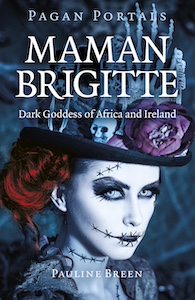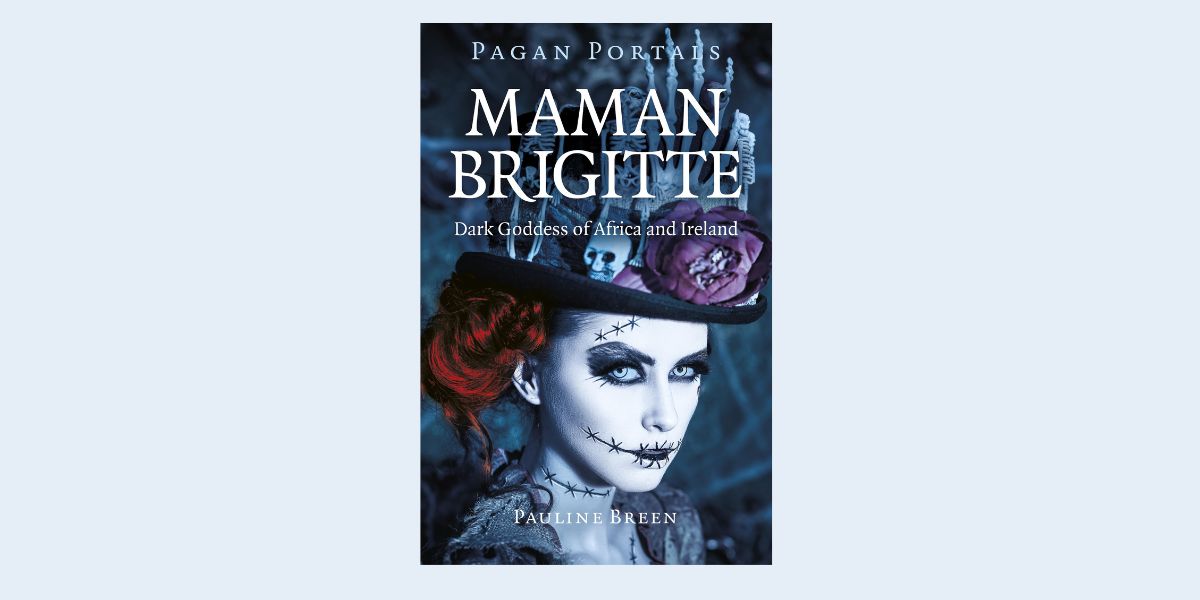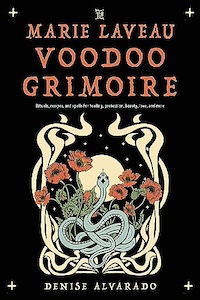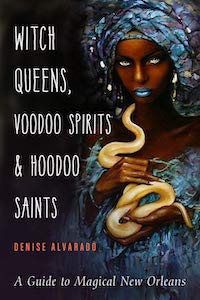
Pagan Portals – Maman Brigitte: Dark Goddess of Africa and Ireland, by Pauline Breen
Moon Books, 1803417366, 112 pages, December 2024
I was unexpectedly and pleasantly surprised while reading Pagan Portals – Maman Brigitte: Dark Goddess of Africa and Ireland by Pauline Breen. While I’ve always been drawn to learning more about Saint Brigid from Ireland, I was previously unaware of Maman Brigitte and Brigid’s possible connection to the Lwa of Vodou.
Breen masterfully traces Brigid’s influence from Ireland to Haiti and, astoundingly, even to New Orleans in Louisiana, where I currently reside. Her research is conducted with evident respect for each culture she explores. It is profoundly interesting to observe how a goddess from Celtic culture has traversed such vast distances and touched the lives of people from completely different backgrounds, especially women who clearly needed her presence in their darkest times.
This book proved to be a truly fascinating read, resonating with me on a deeply personal level. As a woman of Irish descent, born and raised in Louisiana, and a mother currently navigating the recent loss of an infant, I felt a strong connection to Maman Brigitte. The book reveals that Maman Brigitte can be called upon for numerous purposes, but I was particularly drawn to her role as a protector of mothers, especially pregnant mothers, and children, as well as her assistance to souls transitioning from life to death.
I firmly believe that all things happen for a reason and that experiences come to us when we need them most, which is precisely how I feel about encountering this book. Unlocking knowledge of a goddess who aligns so closely with my current path has been an incredibly enlightening and humbling experience. I found myself deeply moved by the sample invocation and prayer included within the pages, which inspired me to write my own. Connecting to her energy was surprisingly effortless; I simply asked for her assistance, and I felt her presence with me. She provided me with strength and enveloped me in love, reassuring me that I would, and could, get through this challenging time.
Breen’s writing style is both engaging and accessible, making the book’s topics easy to understand. Her obvious passion for her subject matter shines through, and her dedication to her studies is evident on every page. Breen’s explanations of the historical and cultural contexts surrounding both Brigid and Maman Brigitte were clear and informative. The book is well-organized, with each chapter building upon the previous one, creating a cohesive and compelling narrative.
While I thoroughly enjoyed this book, I did find myself yearning for more in-depth exploration. Each chapter left me with a desire to delve further into the histories and struggles of women in each of the regions discussed. I would have loved for the author to have traveled to Haiti to gain more firsthand experience and speak with more practitioners and women who have a direct relationship with Maman Brigitte. While Breen does include references and quotes from other books that can guide further exploration, which I will be seeking those out to add to my library, her writing is so engaging that I found myself preferring to continue learning from her experiences and perspective.
Pagan Portals – Mama Brigitte serves as an excellent introduction to both Maman Brigitte and Saint Brigid. It is a highly informative work, and Pauline Breen demonstrates an impressive level of knowledge and devotion to her subject. I am very interested in learning and reading more from her in the future and even beginning my own research into the duality of gods and goddesses across various cultures.
This book offers a truly unique perspective that many might not connect on their own. It is a valuable read for all women, offering historical insights and a source of personal empowerment. The exploration of the connection between these two powerful figures is both fascinating and thought-provoking, and the book’s exploration of their shared aspects and their individual qualities is well-balanced.
In conclusion, Pagan Portals – Maman Brigitte is a compelling and enlightening book that offers a fresh perspective on the interconnectedness of cultures and the enduring power of feminine spirituality. It is a must-read for anyone interested in goddesses, Celtic traditions, Vodou, or the history of women’s spirituality. I highly recommend this book to anyone seeking a deeper understanding of these subjects or looking for inspiration and empowerment in their own lives. I eagerly await Breen’s future works and will continue to explore the themes and ideas presented in this captivating book.

Missy Campbell, a devoted mother and wife, is driven by curiosity and a love of learning, particularly in spirituality and healing. As a Reiki practitioner and homesteader, she embodies a holistic approach to life. An avid reader and deck collector, she finds inspiration in symbolism and personal connection. Meditation, music, and self-improvement, centered around her family and her connection to the earth, enrich her life.





